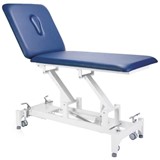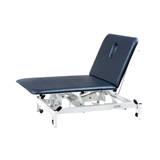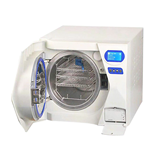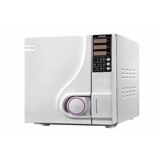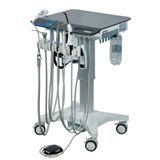Discover how to maintain and calibrate your skin rejuvenation machines to extend their lifespan, reduce downtime, and ensure client safety. This expert Australian guide covers care routines, servicing costs, and calibration tips tailored for clinics, salons and spas.
Key takeaways
- Consistent maintenance extends device life by 30–40% – According to Clinical Aesthetics Australia, machines that undergo scheduled servicing last significantly longer and deliver more reliable results.
- Calibration every 6–12 months is essential – Recommended biannual calibration for optimal energy output and safety.
- Machine downtime can cost clinics $1,500–$3,000 per day, factoring in lost treatments, rescheduling, and technician call-out fees.
- Annual maintenance costs range from $800 to $2,000, depending on the model and service frequency.
- TGA compliance is critical – Medical-grade machines must be listed on the Australian Register of Therapeutic Goods (ARTG) to ensure safety and legal compliance.
- Usage matters:
- Clinics should invest in IPL/laser platforms with robust calibration tools.
- Spas benefit from LED and RF machines with lower calibration needs.
- Salons should look for simple interface machines with auto-calibration features.
- Neglecting maintenance leads to 70% of premature machine failures, based on industry surveys.
Introduction
Buying a skin rejuvenation machine in Australia is a significant investment for any clinic, salon, or spa. But ownership is just the beginning. Routine care and calibration are essential to protect your investment, maximise treatment outcomes, and ensure long-term compliance.
With industry expectations for safety and consistency at an all-time high, overlooking maintenance can lead to equipment failure, legal complications, and unhappy clients. This comprehensive guide walks you through how to choose the right skin rejuvenation machine based on your business type, and how to keep it running at peak performance through targeted care and calibration routines.
Understanding your usage: Choosing the right machine for your setting
1. Clinics (dermatology and medical aesthetics)
- Recommended devices: Multi-platform IPL or fractional laser systems
- Top features to look for:
- High energy stability with integrated diagnostics
- Interchangeable heads for varied treatments
- Service logs and calibration alerts
- Why calibration matters: High-frequency use demands precise energy delivery to avoid burns, under-treatment, or compliance issues.
2. Beauty salons
- Recommended devices: Compact IPL or radiofrequency units
- Top features:
- User-friendly interfaces
- Auto-calibration or pre-set programs
- Simple handpiece cleaning protocols
- Why calibration matters: Inconsistent performance can lead to uneven results, client dissatisfaction, and repeat service requirements.
3. Day spas and wellness centres
- Recommended devices: LED therapy or non-ablative RF platforms
- Top features:
- Minimal calibration needs
- No consumables
- Integrated preset modes
- Why calibration matters: Even with lower-energy treatments, calibration ensures consistent exposure and supports outcome tracking.
Daily to annual maintenance checklist
Maintaining your device doesn’t have to be complicated. A clear routine can improve uptime, protect your warranty, and reduce repair bills.
Daily maintenance
- Wipe down all contact surfaces using approved disinfectants.
- Check lens, filters, and handpieces for dirt or debris.
- Inspect power cords and handpieces for signs of wear.
- Run a short test pulse to check output before client use.
Weekly maintenance
- Clean cooling vents and fans.
- Ensure handpiece attachments are securely fastened.
- Check treatment logs for anomalies in performance.
- Monitor consumable levels if applicable (gel, filters, water reservoirs).
Monthly maintenance
- Inspect calibration tags or system prompts.
- Perform internal self-tests (available on many premium models).
- Clean fibre-optic cables and polish tips as required.
Annual maintenance (or as recommended by manufacturer)
- Full machine calibration by certified technician.
- Replace worn-out parts (lamps, capacitors, filters).
- Upgrade software and firmware.
- Check compliance documentation and update logs.
Calibration: What it is, and why it matters
What is calibration?
Calibration ensures your skin rejuvenation device delivers the correct wavelength, pulse duration, and energy intensity every time. Without calibration, energy drift can lead to subpar results or even client injury.
How often is it needed?
Here’s a breakdown of how often you should calibrate different types of skin rejuvenation machines, along with the typical costs in Australia:
- IPL Systems: Calibrate every 6–12 months. Expect to pay between $800 and $1,200.
- Laser Platforms: Calibrate every 6 months. Costs typically range from $1,000 to $2,000.
- RF Systems: Calibrate annually (every 12 months). Budget around $500 to $900.
- LED Panels: Calibrate approximately every 18 months. Calibration usually costs $300 to $700.
Who should perform it?
Only trained, certified technicians. In Australia, many device distributors offer annual service contracts. Using an unauthorised party can void your warranty and insurance.
Signs calibration is overdue:
- Inconsistent treatment results
- Increased number of required sessions
- Overheating or device error codes
- Longer client recovery times
Costs of neglect: What happens without care?
Aesthetic industry research shows that:
- 70% of early device failures stem from poor maintenance.
- 80% of complaints about results are tied to inconsistent output.
Direct business impact:
- Lost income: A day of downtime can cost $1,500–$3,000 in missed bookings.
- Client dissatisfaction: Inconsistent results can damage your reputation and online reviews.
- Compliance issues: Clinics operating miscalibrated medical-grade devices risk breaching TGA standards.
- Higher long-term costs: Emergency repairs and part replacements often cost more than routine upkeep.
Signs your machine is failing due to poor care
Routine calibration and upkeep aren't just compliance tasks — they are critical for ensuring your skin rejuvenation machine operates safely and consistently. Neglecting maintenance can lead to performance issues, treatment risks, and reputational damage.
Below are the most common signs that your device may be underperforming due to lack of care:
Technical and treatment-related warning signs
- Treatments are taking longer than usual
- Slower session times often indicate reduced energy output, delayed pulse delivery, or inefficient cooling — all of which may be caused by poor maintenance.
- Clients are requiring more sessions for the same results
- A tell-tale sign of inadequate calibration. If your machine isn't delivering consistent energy, clients may need additional appointments to achieve the expected outcome.
- Uneven energy delivery during treatment
- Dirty lenses, degraded handpieces, or misaligned optics can cause fluctuations in intensity across treatment areas, resulting in uneven results or discomfort.
- The device frequently overheats or displays error codes
- Internal dust, clogged vents, or failing electrical components can trigger error messages — all symptoms of skipped or delayed servicing.
Client complaints to pay attention to
- Reports of discomfort or superficial burns
- Miscalibrated IPL and laser systems may emit energy levels outside of safe parameters, leading to skin irritation, burns, or excessive redness.
- Patchy or inconsistent treatment results
- Clients might not know what's wrong technically, but they will notice when results are uneven or not up to standard.
- Prolonged redness or skin sensitivity after treatment
- This may indicate excessive energy output or ineffective cooling systems — both common signs of wear and maintenance neglect.
What to do if you notice these signs
- Cease treatments temporarily if there are overheating issues, software errors, or adverse skin reactions.
- Arrange a full diagnostic check and calibration with an authorised technician or supplier.
- Keep detailed maintenance logs including what was reported, when servicing was done, and who performed it.
- Retrain staff if needed to ensure the machine is used within operational guidelines — operator error is sometimes mistaken for machine failure.
Addressing these issues promptly not only protects your investment but also preserves client trust, reduces liability, and extends the overall life of your equipment.
What to look for when buying a skin rejuvenation machine in Australia
TGA compliance
Ensure the machine is listed on the Australian Register of Therapeutic Goods (ARTG). Devices without ARTG listing may be seized or banned from use in medical clinics.
Warranty and service inclusions
- Check that warranty covers parts, labour, and onsite repairs.
- Confirm that calibration services are included or discounted.
- Ask about loan units during servicing.
Local support and training
- Prefer Australian-based suppliers who offer certified training.
- Ask for technician response times and service locations.
- Look for clear documentation and calibration records.
FAQs: Routine care and calibration of skin rejuvenation machines
1. How soon after purchasing should I service my machine?
Most machines come calibrated from the factory. Plan your first calibration for 6–12 months after installation, depending on usage.
2. Can I calibrate the machine myself?
No. Proper calibration requires diagnostic equipment and proprietary software. DIY attempts can void your warranty and affect treatment outcomes.
3. What is included in a standard calibration?
- Energy output testing
- Handpiece alignment
- Diagnostic scan of internal components
- Replacement of consumables (if due)
- Software updates
4. Does calibration affect insurance?
Yes. Some professional indemnity insurers may not honour claims if your device was not maintained or calibrated according to the manufacturer’s schedule.
5. How do I know if my machine has been calibrated correctly?
You should receive a calibration certificate and test log from the technician. Store these with your service records and insurance documentation.
6. Is maintenance different for LED vs laser machines?
Yes. LED machines typically have lower maintenance needs due to passive energy generation. Lasers and IPL systems require more frequent calibration and part replacement.
7. What if my clinic is in a remote area?
Many Australian suppliers offer video support, remote diagnostics, and mobile technician visits for rural clinics. Always check service coverage before buying.
Conclusion
Routine care and calibration are not just technical requirements — they are strategic practices that protect your equipment investment, preserve client trust, and secure your clinic’s financial performance.
When comparing skin rejuvenation machines in Australia, go beyond upfront cost and look at the full lifecycle: compliance, service support, calibration frequency, and real maintenance needs. Whether you're a busy clinic, an expanding salon, or a wellness-focused spa, your machine's longevity ultimately depends on how well you care for it.


